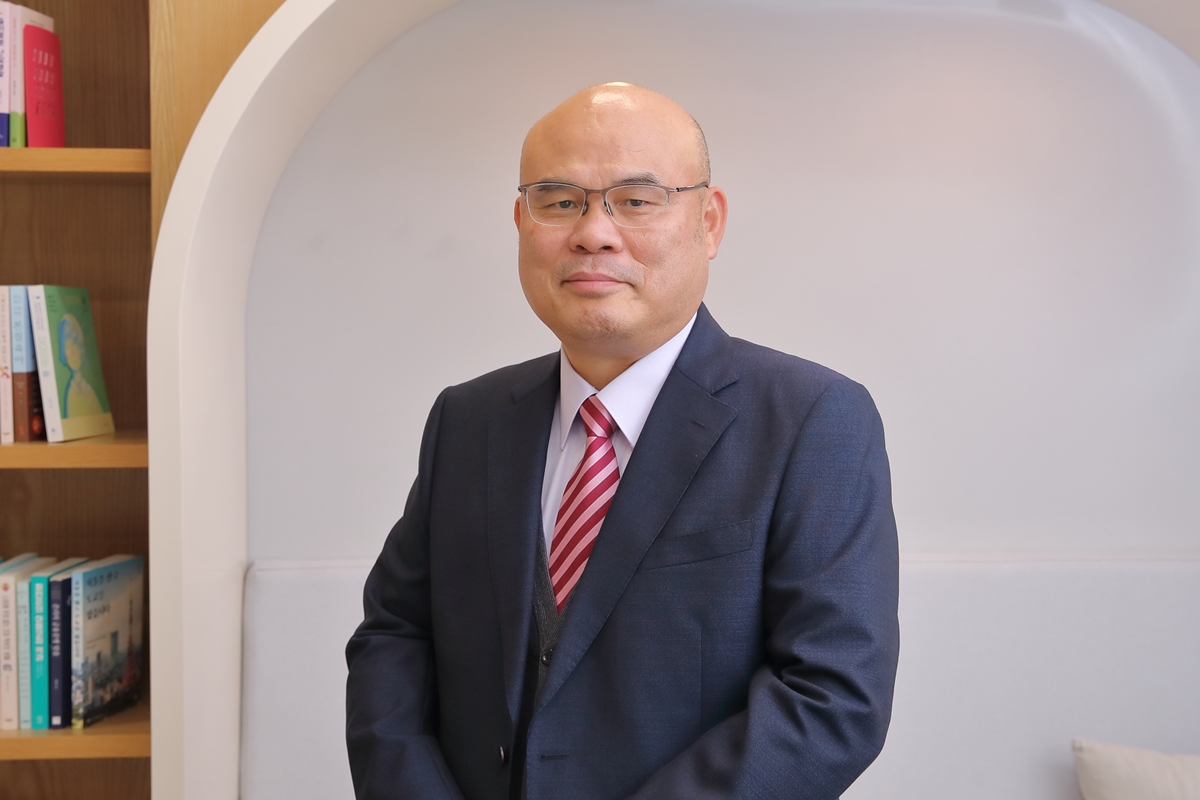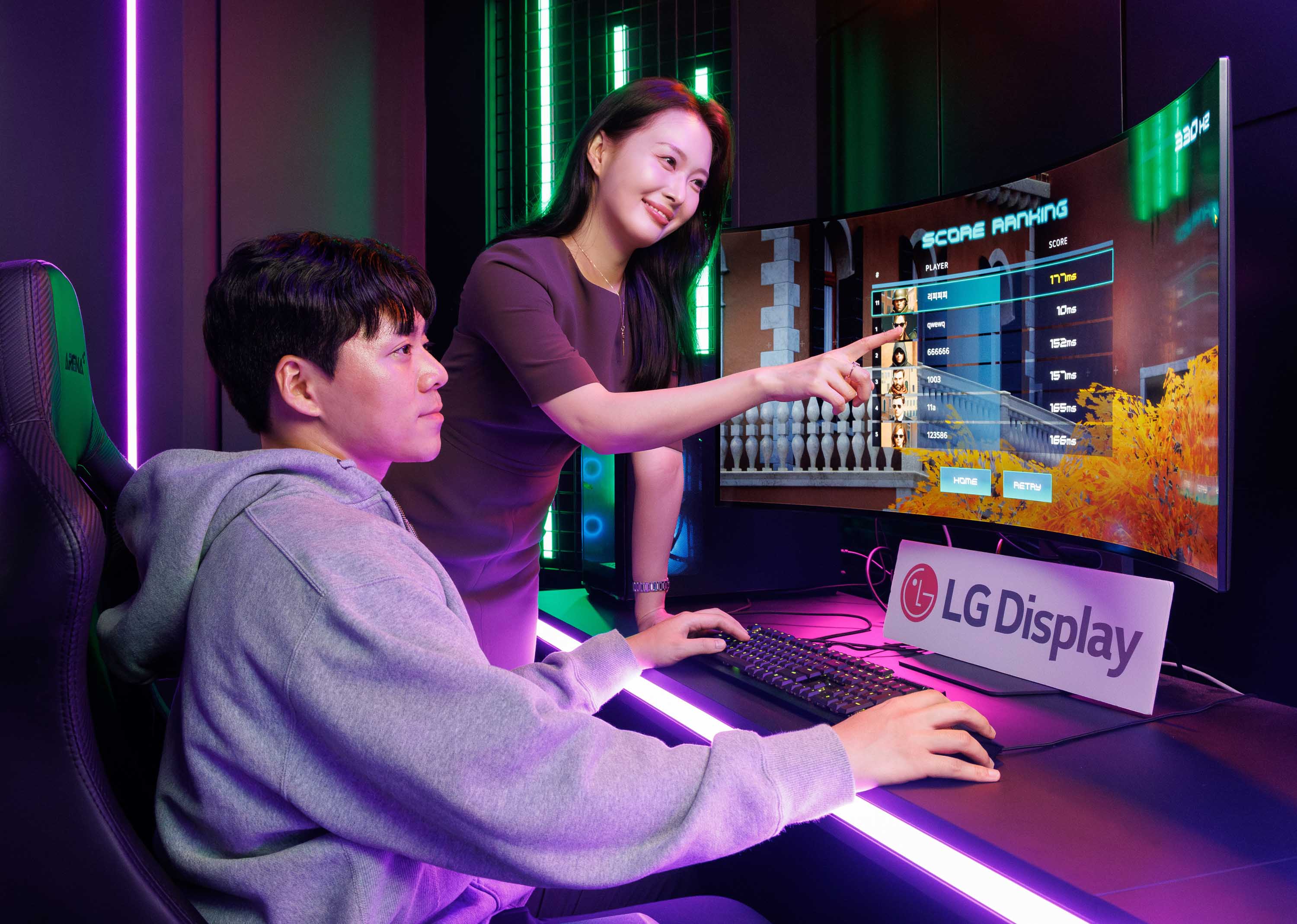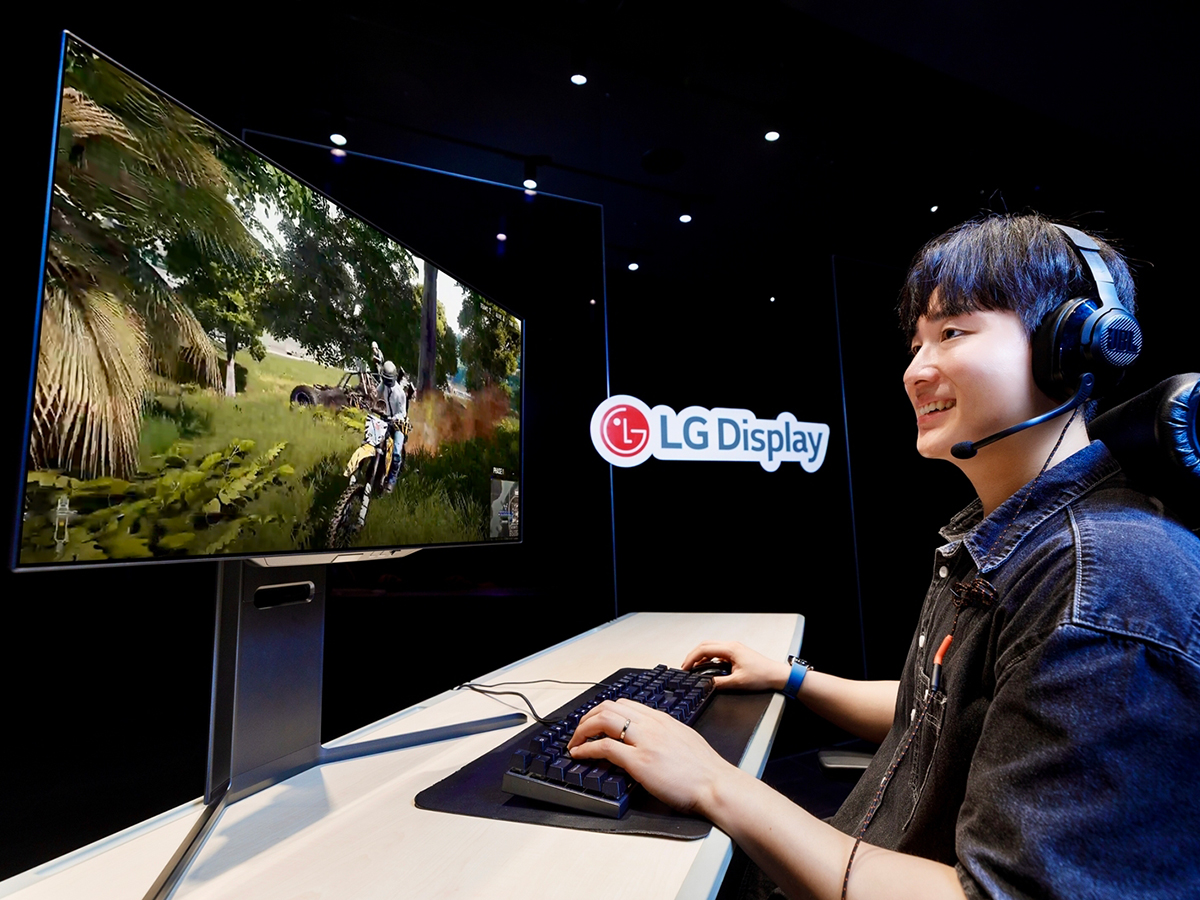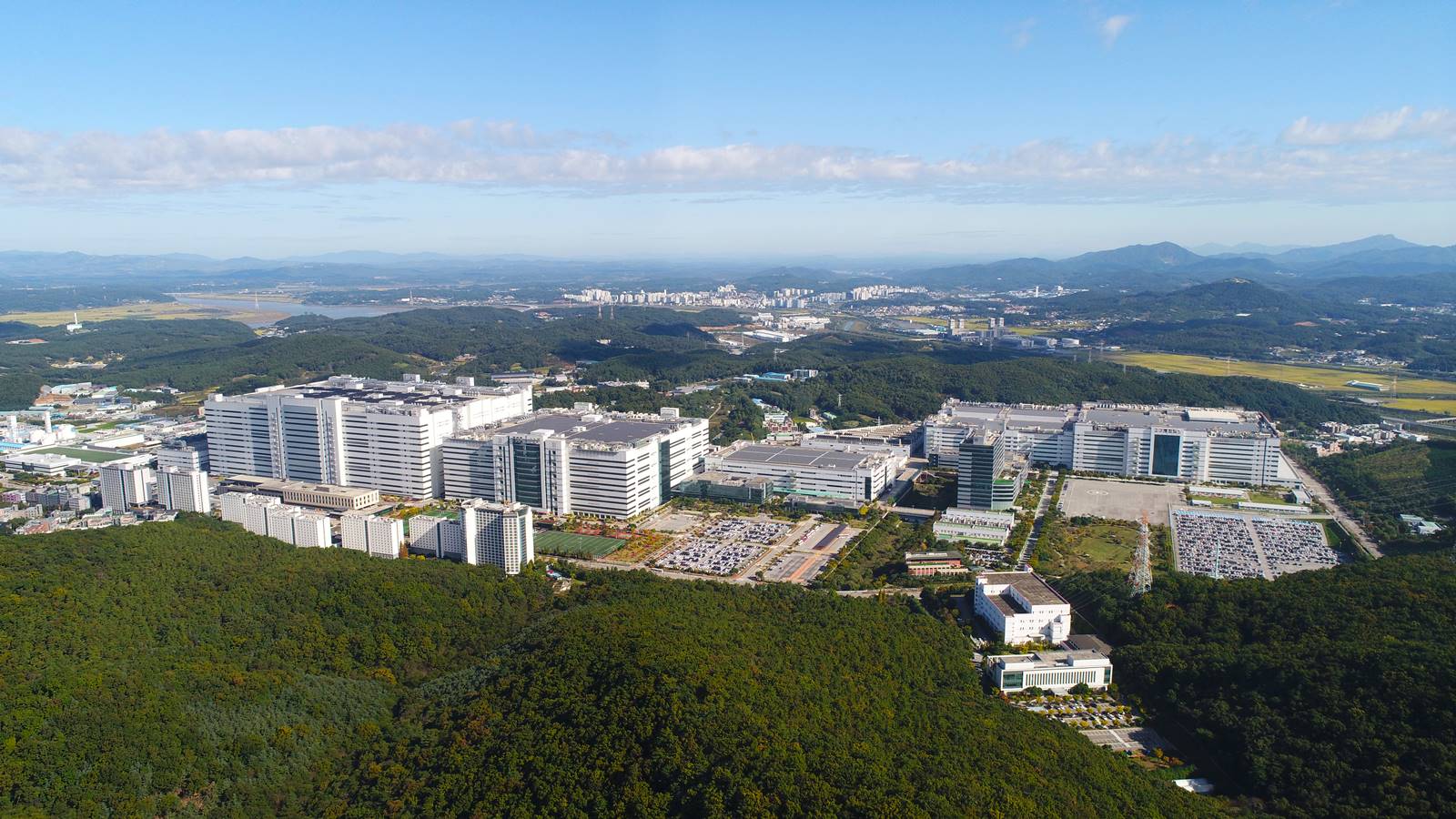Latest News
-
 PR LG Display presents vision for future of displays leading AI innovation at IMID 20252025-08-20 See details
PR LG Display presents vision for future of displays leading AI innovation at IMID 20252025-08-20 See detailsSEOUL, Korea (August 20, 2025) – LG Display, the world’s leading innovator of display technologies, on Wednesday presented innovations optimized for the AI age alongside its vision for the future at the largest academic display conference in Korea.
The International Meeting on Information Display (IMID), hosted by the Korean Information Display Society (KIDS), brings together more than 2,000 display experts annually. IMID 2025 is being held at BEXCO in Busan for three days from Aug. 20.
At the opening ceremony, Choi Hyun-chul, Executive Vice President at LG Display, delivered a keynote speech under the title of “Beyond Screen: Display as Cognitive Interface,” outlining the company's future vision of displays whose role has grown in the age of AI.
“With the advancement of AI, the display has become a cognitive interface - a window where humans and AI meet and communicate," Choi said. He presented the direction of display technology, form, and evolution that will lead AI innovation, including the evolution of the user interface, the evolution of the spatial structure, and the sustainability of AI.
First, introducing the evolution of the user interface, he explained that there is a growing need for displays that can accurately express human intentions and emotions when it comes to AI, emphasizing that OLED is the most optimized technology for this purpose.
“As AI evolves to understand human behavior, displays will move beyond simply showing information,” he said. “In the future, when AI recognizes our intentions and emotions, what matters then is how precisely displays can express them.”
Choi emphasized that high brightness, high resolution, and high color accuracy technology is needed to deliver brighter, clearer, and more accurate color expression. “To achieve this, it is necessary to not only continue developing optical structures for light extraction but also to optimize OLED designs as we have seen with third- and fourth-generation OLED and layered structures such as Tandem OLED.”
He then highlighted the evolution of the spatial structure of displays. He cited “form-factor-free” examples such as Slidable OLEDs and Stretchable displays, and mentioned 3D, augmented reality (AR), virtual reality (VR), transparent, and hologram displays as “technologies that have evolved to offer deeper visual depth and multidimensionality.”
Slidable OLEDs are displays that are as thin as paper and can be hidden in narrow spaces such as car ceilings. With their bright and clear screens, they enable movie viewing and video conferencing, greatly reducing time and space limitations.
Stretchable displays are the ultimate in free-form screens that can be freely transformed into any shape, including by stretching, folding, or twisting them. LG Display unveiled a Stretchable display with the industry's highest screen elongation rate (approximately 50%) in November last year.
Finally, Choi explained the conditions for the sustainability of AI. He said that technology is needed to selectively show content to intended users, in order to protect privacy. In this regard, he introduced Switchable Privacy Mode (SPM), a field of view control technology that detects the line of sight of people nearby and displays information only to necessary users.
He also insisted that “AI devices inevitably require increased power consumption for real-time responses,” adding that “displays are the most critical component for power efficiency.”
In addition, he emphasized the importance of eco-conscious technology, as LG Display has been implementing various activities such as carbon reduction and water reuse. As a result, the company has this year been awarded a “Platinum” rating by global ESG evaluation agency EcoVadis, which means it is in the top 1% for ESG management.
Choi concluded his speech by saying, “In the AI age, OLED is the most suitable display for accurately implementing users’ intentions in various forms according to context and considering the sustainability of technological evolution.” He added, “OLED will be a turning point that leads the innovation and expansion of the display industry along with the growth of AI.”
Meanwhile, LG Display set up a special exhibition hall for IMID visitors to experience its 18-inch Slidable OLED for vehicles, Stretchable display, 83-inch fourth-generation OLED TV panel selected as “Display of the Year” at the conference, and Gaming OLEDs.
The company is additionally presenting 23 research papers on OLED and next-generation displays during the event, emphasizing its differentiated technological leadership.
-
 PR LG Display presents world’s best OLED technologies alongside historic firsts at K-Display 20252025-08-07 See details
PR LG Display presents world’s best OLED technologies alongside historic firsts at K-Display 20252025-08-07 See detailsSEOUL, Korea (August 7, 2025) – LG Display, the world’s leading innovator of display technologies, announced today its participation in K-Display 2025 at COEX in Seoul for three days from Aug. 7, as the company is showcasing innovative technologies and products ranging from large, medium, and small-sized panels to automotive displays.
LG Display is presenting OLED innovations and display solutions that bridge the present and future under the theme, “Shaping the Future.”
In particular, the exhibition features an experience Zone where visitors can directly encounter the world's first and best technologies, enhancing their understanding of LG Display’s capabilities.
The OLED Heritage exhibition space allows visitors to see at a glance the technological leadership LG Display has achieved since becoming the first in the world to successfully mass-produce large-sized OLED panels.
This journey covers the company's 15-inch OLED panel prototype from 2009, which laid the foundation for OLED TV panels, as well as a Tandem OLED panel with a two-layer structure, the deuterium atom structure of second-generation OLED, the Micro Lens Array (MLA) technology of third-generation OLED, and the Primary RGB Tandem structure of fourth-generation OLED. All are presented so that visitors can more intuitively understand OLED technology.
At the booth's entrance, visitors witness LG Display’s 83-inch OLED panel featuring fourth-generation OLED technology, which was newly unveiled by the company this year. Fourth-generation OLED achieves a maximum brightness of 4,000 nits based on the industry's first Primary RGB Tandem technology, which stacks the three primary colors of light (red, green, and blue) as independent layers.
LG Display is demonstrating a comparison of the previous generation's picture quality with that of fourth-generation OLED panels using ultra-large-sized panels, highlighting the incredible three-dimensionality and rich color reproduction of its latest technology.
In addition, it is unveiling the world's fastest OLED monitor panel for the first time. LG Display's 540Hz 27-inch OLED panel (QHD) applies Dynamic Frequency & Resolution (DFR) technology to achieve an ultra-high refresh rate of up to 720Hz (HD) depending on the user's needs. Combined with fourth-generation OLED technology, it boasts the highest level of picture quality among OLED monitor panels, with 99.5% DCI-P3 color reproduction and a maximum brightness of 1,500 nits.
Also on show is a 45-inch 5K2K (5120×2160) OLED panel, which boasts the world's highest resolution among existing OLED monitor panels. Visitors are able to play games using this panel and thereby discover the difference refresh rates make to gaming.
Those in attendance additionally have the chance to experience LG Display's various automotive display technologies and products in an auto cockpit with a living space concept that facilitates fully autonomous mobility beyond software-defined vehicles (SDVs).
The 57-inch Pillar-to-Pillar LCD at the center of the cockpit is the largest automotive display currently available, providing information and entertainment functions as desired through its natural curved screen. There is also a 32.6-inch Slidable OLED for vehicles, which unfolds downward when needed, as well as an ultra-bright 29-inch Outdoor LCD, which can be used for both advertising and communication with the world outside the vehicle.
Moreover, LG Display is exhibiting a 47.8-inch LTPS LCD equipped with Switchable Privacy Mode (SPM) technology, allowing the screen in front of the passenger seat to be adjusted so that it is not visible from the driver's seat. The company is also introducing the world’s first jog dial for vehicles that utilizes a Stretchable display that can stretch up to 53%. This innovative product maintains a smooth and flat form when not in use, but when a button is touched, it stretches to form a jog dial.
Additionally, there is a 14-inch Tandem ATO featuring LG Display’s Tandem structure for the first time in the industry, offering both high brightness with low power consumption while also enabling a thin and lightweight design with a single glass substrate structure. A 14.5-inch LCD unveiled alongside it uses advanced Oxide TFT and low-power backlight technology to maximize battery life, providing an optimized display solution for the AI era's significantly higher power consumption.
“The LG Display-led technological evolution of OLED is changing the paradigm of displays,” said an official at LG Display. The official added, “We will secure sustainable technological competitiveness and provide differentiated customer value by not only bringing commercial technologies to maturity but also solidly preparing R&D capabilities for future technologies.”
-
 PR LG Display Reports Second Quarter 2025 Results2025-07-24 See details
PR LG Display Reports Second Quarter 2025 Results2025-07-24 See detailsLG Display recorded KRW 5.587 trillion in revenues and KRW 116 billion in operating loss in the second quarter of 2025.
The company’s first half results were KRW 11.652 trillion in revenues and KRW 82.6 billion in operating loss, a 3% decrease in revenues but a KRW 480.5 billion operating loss improvement compared with the previous year’s first-half results (KRW 11.961 trillion in revenues and KRW 563.1 billion in operating loss).
LG Display is continuing its trajectory toward a full-year performance turnaround, driven by the advancement of its OLED-centered business structure, improvements in cost structure, and enhanced operational efficiency.
With the second quarter being the traditional off-season when demand declines before new product launches in the second half of the year, mobile shipments declined sequentially. Other factors impacting performance included LG Display’s LCD TV business exit, in line with its strategy to advance its OLED-centered business structure, as well as a weaker KRW/USD exchange rate.
Net profit turned positive to KRW 890.8 billion, reflecting improved foreign exchange gains due to exchange rate fluctuations and other gains, including a gain on the sale of a stake in its Guangzhou LCD plant.
TV panels accounted for 20% of revenues in the second quarter, while those for IT devices including monitors, laptops, and tablet PCs accounted for 42%. Panels for mobile and other devices accounted for 28% and automobile panels accounted for 10% of revenues.
OLED products accounted for 56% of LG Display’s total revenues, marking a 4%p increase year-on-year. Backed by its strengthened technological competitiveness in OLED, the company is expanding its business performance. In addition, LG Display is focusing on reinforcing its fundamentals by continuously pursuing cost innovation and operational efficiency.
In its small- and mid-sized OLED business, the company aims to strengthen its competitiveness in the high-end market based on its technology leadership, including Tandem OLED technology, which has excellent durability and performance characteristics such as long lifespan, high brightness, and low power consumption, as well as being able to offer stable smartphone panel supply capabilities.
With regard to its large-sized OLED business, LG Display will solidify its leadership in the premium market with a diverse lineup of OLED panels delivering differentiated value, including fourth-generation OLED TV panels underpinned by the company’s proprietary Primary RGB Tandem technology, and gaming monitors that have achieved the triple crown of the world's highest brightness, refresh rate, and response time.
As for its automotive display business, LG Display will continue to create differentiated customer value based on innovative technologies and product competitiveness, enabling ultra-large size, high definition, reliability and durability, low power consumption, and various form factors.
“In the second half of the year, we expect a sharp rebound in earnings with expanded performance across our OLED business, and we will continue to improve cost innovation and operational efficiency to strengthen our stable profit structure,” said Sung Hyun Kim, CFO of LG Display. Kim added, “We are also improving our financial structure, including the early repayment of loans and reduction of borrowing, at a faster pace than originally planned, so we will show meaningful results in both earnings and financial structure this year.”
-
 PR LG Display Begins Mass Production of Ultimate Gaming OLED Panel with 4th-Generation OLED Technology2025-06-27 See details
PR LG Display Begins Mass Production of Ultimate Gaming OLED Panel with 4th-Generation OLED Technology2025-06-27 See detailsSEOUL, Korea (June 27, 2025) – LG Display, the world’s leading innovator of display technologies, announced today that it has successfully begun mass production of the world’s top OLED monitor panel, incorporating its latest proprietary technology as the company accelerates its push into the premium monitor panel market. The 27-inch OLED monitor panel achieves a peak brightness of 1,500 nits thanks to the application of the company’s core fourth-generation OLED technology, Primary RGB Tandem.
In addition, LG Display has successfully developed a 540Hz OLED monitor panel - surpassing the highest refresh rate currently available - and plans to unveil it soon.
As a result, LG Display is leading the world’s OLED technology across the “triple crown” of key elements that determine gaming monitor picture quality - brightness, refresh rate, and response time.
By incorporating its proprietary Primary RGB Tandem technology, LG Display’s 27-inch OLED monitor panel delivers the highest peak brightness among existing OLED monitors - 1,500 nits (based on APL 1.5%) and a refresh rate of 280Hz. This technology is the world’s first to stack the three primary colors of light - red, green, and blue - into four separate, independent layers. By increasing peak brightness, it maximizes contrast ratio, delivering more vivid and accurate visuals.
The panel also achieves a color reproduction rate of 99.5%, the highest among existing OLEDs and a level that is suitable for professional content creation environments such as film production and color grading.
Moreover, it eliminates screen glare, which significantly impacts the gaming experience, blocking 99% of internal and external light reflections through a special film and improved internal panel element structure. As a result, it maintains perfect picture quality without color distortion even under lighting conditions of 500 lux - the brightness of a living room in broad daylight. This has enabled the panel to obtain certifications for Perfect Black, Perfect Color, and 100% Color Fidelity from global organizations such as UL Solutions and Intertek.
LG Display additionally revealed details of its development of the first OLED monitor panel to simultaneously support a 540Hz refresh rate and QHD resolution. A 540Hz refresh rate means the screen refreshes 540 times per second, delivering overwhelming performance in fast-paced games such as first-person shooters (FPS) and racing titles.
Exceeding a 500Hz refresh rate had been considered a virtually unbreakable threshold due to the associated steep drop in picture quality. LG Display has successfully overcome this limitation by developing and applying a new proprietary algorithm. The 540Hz refresh rate goes beyond even the highest standards envisioned by professional gamers for OLED gaming monitors.
Meanwhile, LG Display’s proprietary Dynamic Frequency & Resolution (DFR) technology enables ultra-high refresh rate modes of up to 720Hz in HD resolution. DFR allows users to select their preferred refresh rate mode depending on the content.
The company’s OLED monitor panels also feature an industry-leading response time of 0.03ms, far surpassing the performance of LCD monitors, which have a response time of up to 1.0ms.
Response time refers to how long it takes for a pixel to change from one color to another. Even with a high refresh rate, if the response time is slow, blurred edges or ghosting from previous frames can occur. A fast response time is essential to fully experience the speed of fast-paced games.
LG Display’s OLED panel for monitors combines an ultra-fast 0.03ms response time with a high refresh rate of 540Hz, meeting the highest tier of the relevant Video Electronics Standards Association (VESA) standard - ClearMR (Clear Motion Ratio) 21,000. A higher ClearMR value indicates better picture quality, greater clarity, and reduced motion blur.
With major global set manufacturers having completed launch evaluations, LG Display plans to begin mass production of its 540Hz Gaming OLED panel in the second half of this year.
“OLED monitors are rapidly expanding their market share thanks to perfect black levels and fast response times - capabilities fundamentally unattainable by LCD monitors,” said Hyeon-woo Lee, Head of the Large Display Business Unit at LG Display. “With proprietary technologies like fourth-generation OLED and DFR, which competitors cannot replicate, LG Display will enhance its competitiveness in the premium monitor market and deliver differentiated value to customers.”
LG Display Begins Mass Production of Ultimate Gaming OLED Panel
with 4th-Generation OLED Technology -
 PR Securing a Future Market Lead Through OLED Technology Differentiation2025-06-17 See details
PR Securing a Future Market Lead Through OLED Technology Differentiation2025-06-17 See detailsSEOUL, Korea (June 17, 2025) – LG Display, the world's leading innovator of display technologies, announced today that it plans to make an investment in new OLED technologies at the trillion-KRW level to enhance its technological competitiveness and growth foundation.
The company's board met on June 17 and approved an investment of KRW 1.26 trillion in new OLED technologies to secure a leading position in the display market.
It will focus on infrastructure development, including facilities for applying new OLED technologies. The investment period has been set for approximately two years, from June 17, 2025, to June 30, 2027.
This investment is part of LG Display’s mid- to long-term capital expenditure (CAPEX) plan, and efforts to improve the company’s financial structure will continue independently of it.
LG Display plans to focus its facility investment related to next-generation OLED technologies primarily at its Paju campus. This move aims to proactively respond to growing global demand for OLED in the display market.
The company’s strategy is to focus investment on developing premium products to continuously deliver differentiated customer value and widen the gap with competitors in the growing OLED market. This approach is based on the assessment that demand for high-performance premium OLEDs is increasing as technology evolves.
Through its investment, LG Display will concentrate on next-generation premium OLED panels and building module infrastructure. The investment decision was made after thoroughly verifying and preparing stable technology development, mass production systems, and market demand, aiming to secure both future growth drivers and enhanced profitability.
LG Display’s decision to invest in OLED is expected to have a positive impact on the local economy of Gyeonggi-do, including Paju, where most of the investment will be concentrated. In particular, this is the first domestic investment of its kind since the sale of the company’s Guangzhou LCD factory in China and is expected to contribute to the recovery of the national economy.
It not only involves large-scale direct facility investment but also anticipates indirect economic effects through collaboration with small and medium-sized partner companies. As a result, it is expected to have a positive effect on revitalizing local commercial districts.
“If last year laid the foundation for a turnaround, this year we will do our utmost to make it a year to leap forward,” said Cheoldong Jeong, CEO and President of LG Display. “We will proactively develop differentiated technologies and products unique to LG Display to deliver customer value and lead the market.”